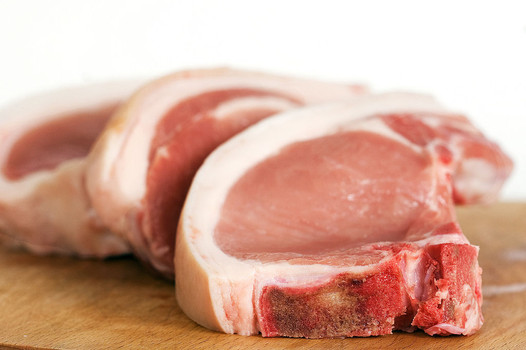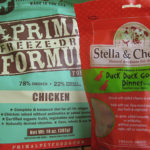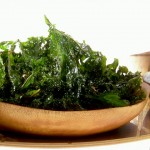By Robert Mueller, R. Ph.
Feeding raw is the recent buzz word that has kibble dog food manufacturers scrambling. Why are they worried? Is it because they are afraid that the more educated consumer will see greater benefits from feeding Fido a more nutritious food source? Are they afraid of losing the market share of their multi-billion dollar bonanza? Or has the technologically advanced, Google-driven Internet made the spread of knowledge easier, resulting in a highly educated consumer?
Consumers today are looking past convenience as the only criteria for choosing a diet for their companion animals. They want to know why the diets contain various ingredients, and have many questions around labeling, ingredient quality, and possible contaminants that have no business in their pet’s food.
Consumer marketing is BIG business and has worked for many years. The dry, kibble dog food industry has prospered for the last century, and because of billions of dollars spent on consumer marketing, they have convinced consumers that feeding a dog prepackaged, commercial pet food is a healthy and viable choice.
I challenge anyone to show me the veterinary statistics that prove whether our companion animals are healthier on commercial pet food than in previous generations. Alas, this is not the case. Instead today’s veterinary clinics are plagued with animals that are suffering from increased levels of allergies, diabetes, skeletal and joint conditions, the decline of organ function, and multiple conditions stemming from degenerative diseases. The count is of epidemic proportions. I propose that the cause of this is due to the continuous ingestion of poor quality ingredients, that are grain-based in nature, and that are poorly utilized by the dog’s body.
Expecting your dog to ingest high carbohydrate-laden food every day it is like feeding your children fast food every day. The Association for Pet Obesity Prevention did a study in 2010 and concluded that 54% of dogs and cats in the United States are overweight or obese. Compare that to a 2012 study that showed more than one-third of children and adolescents were either overweight or obese. You can already see the results of what I call “McDonald kids” happening in our pets. A continuous ingestion of any “fast food” type regimen of convenience food will give humans the same result as an animal. The nutritional comparisons are the same whether it is man or beast.
I point my finger to the consumption of a high level of carbohydrate laden food as our country’s biggest threat to a nutritional decline. Look around us and observe the average body shape of our population, observe the animals they feed, and see if you don’t agree that we are a product of what we eat.
I have spent 38 years of my life promoting the philosophy of a more natural and biologically appropriate way to feed our nation’s pets and with the partnership of veterinary surgeon, Dr. Ian Billinghurst, we have developed the BARF Diet™ – the first “done-for-you” raw dog food diet for consumers to feed their companion animals. It has been very much like salmon swimming upstream, trying to promote the concept of raw food diet for pets, but the idea is starting to catch on. In fact, over the last several years, the philosophy has expanded to the point that several new raw dog food brands have jumped on the natural dog diet bandwagon, and together we have expanded the popularity of raw food for dogs.
The raw food controversy continues as the consumer tries to sort out the underlying truth between the various different ways to feed a dog or cat. My conclusions that feeding dogs and cats a natural raw meat-based diet is based on the results I have personally seen over the last four decades in: our clients pets, the performance dogs I developed raw diets for, and the carnivorous canine and feline species housed in the world’s most well-known zoos that I had the privilege of providing raw meat diets to. Yet, the absolute best way to convince a new client of our philosophy of feeding pets raw diets is to have them observe for themselves the turnaround results their pets will experience from eating the BARF Diet™.
The benefits and results are what sell this feeding concept! Once they quickly see the immediate results of reduced stool volume and odor, and skin and coat conditions changed for the better – all within the first 30 days, it is hard not to become a “Born Again Raw Food” believer. Then with the elimination of bad doggy breath and improved dental health as well as weight control occouring within 90 days, the additional benefits are all too welcome to the estatic pet owner.
With results like these, a curiosity begins to form as to what the dry kibble and wet pet food manufacturers are doing to combat our presence in the pet food industry? Interestingly enough, some recent changes are being presented to the consumer, which show me that consumers, and pet food manufacturers, are paying attention. Have you noticed the following new products on the market?
- A new “light version” of popular dry dog foods, exclaiming “20% less calories”
- A new and improved formula that now uses “REAL MEAT” (what were they using before?)
- New versions of the same pet foods that are categorized as ideal for each life stage (puppy, adult, senior)
- Breed-specific dog foods
These and many others are examples of the pet food industry reacting to the new trend in trying to make dog food more nutritious and more nutrient dense. Unfortunately, they will never be able to offer the same level of advantages that a raw diet can provide, but it is good to see that they are starting to adjust their diets to have the health of the animal as their objective.
About
Robert Mueller, BSc, Pharm. is a registered pharmacist, author of “Living Enzymes: The World’s Best Kept Pet Food Secret”. He and his wife love to travel around the world with their dog, Moxie – a Yorkshire Terrier/Maltese mix.











